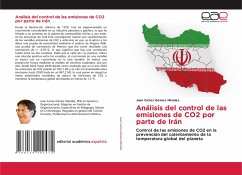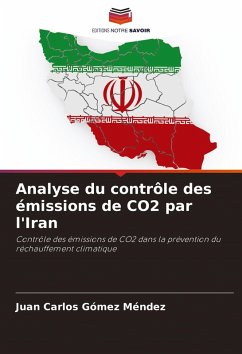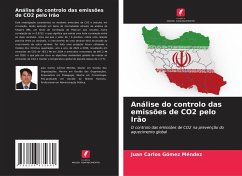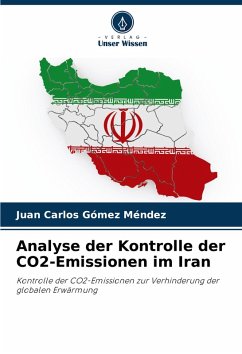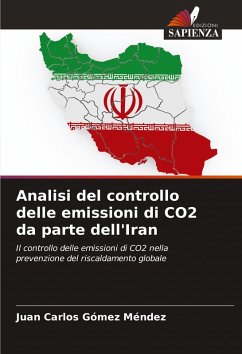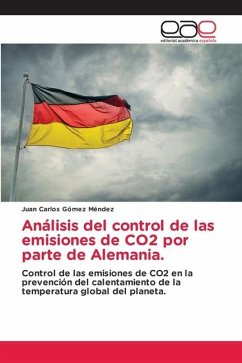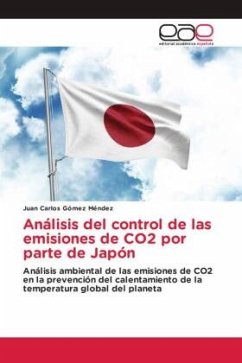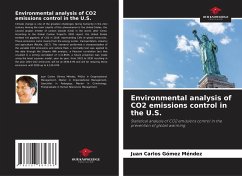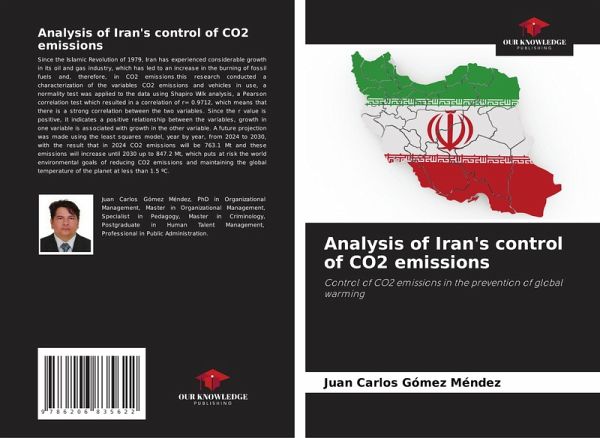
Analysis of Iran's control of CO2 emissions
Control of CO2 emissions in the prevention of global warming
Versandkostenfrei!
Versandfertig in 6-10 Tagen
40,99 €
inkl. MwSt.

PAYBACK Punkte
20 °P sammeln!
Since the Islamic Revolution of 1979, Iran has experienced considerable growth in its oil and gas industry, which has led to an increase in the burning of fossil fuels and, therefore, in CO2 emissions.this research conducted a characterization of the variables CO2 emissions and vehicles in use, a normality test was applied to the data using Shapiro Wilk analysis, a Pearson correlation test which resulted in a correlation of r= 0.9712, which means that there is a strong correlation between the two variables. Since the r value is positive, it indicates a positive relationship between the variabl...
Since the Islamic Revolution of 1979, Iran has experienced considerable growth in its oil and gas industry, which has led to an increase in the burning of fossil fuels and, therefore, in CO2 emissions.this research conducted a characterization of the variables CO2 emissions and vehicles in use, a normality test was applied to the data using Shapiro Wilk analysis, a Pearson correlation test which resulted in a correlation of r= 0.9712, which means that there is a strong correlation between the two variables. Since the r value is positive, it indicates a positive relationship between the variables, growth in one variable is associated with growth in the other variable. A future projection was made using the least squares model, year by year, from 2024 to 2030, with the result that in 2024 CO2 emissions will be 763.1 Mt and these emissions will increase until 2030 up to 847.2 Mt, which puts at risk the world environmental goals of reducing CO2 emissions and maintaining the global temperature of the planet at less than 1.5 ºC.




